Banner photo: Heavy rainfall causes creek to flood. Photo source: Adobe Stock
As a recent addition to the ARRC team, this has been my first opportunity to help landholders restore their river, creek and wetland systems. I could not have chosen a more bizarre time to start! Having grown up in the Millennium drought with dry and often parched rural landscapes, it has been incredible to walk onto properties and have the soil squelch under my feet. I have seen previously unknown streams pop up above ground and transform the landscape, pushing through grass at waist height with an abundance of natural regeneration.
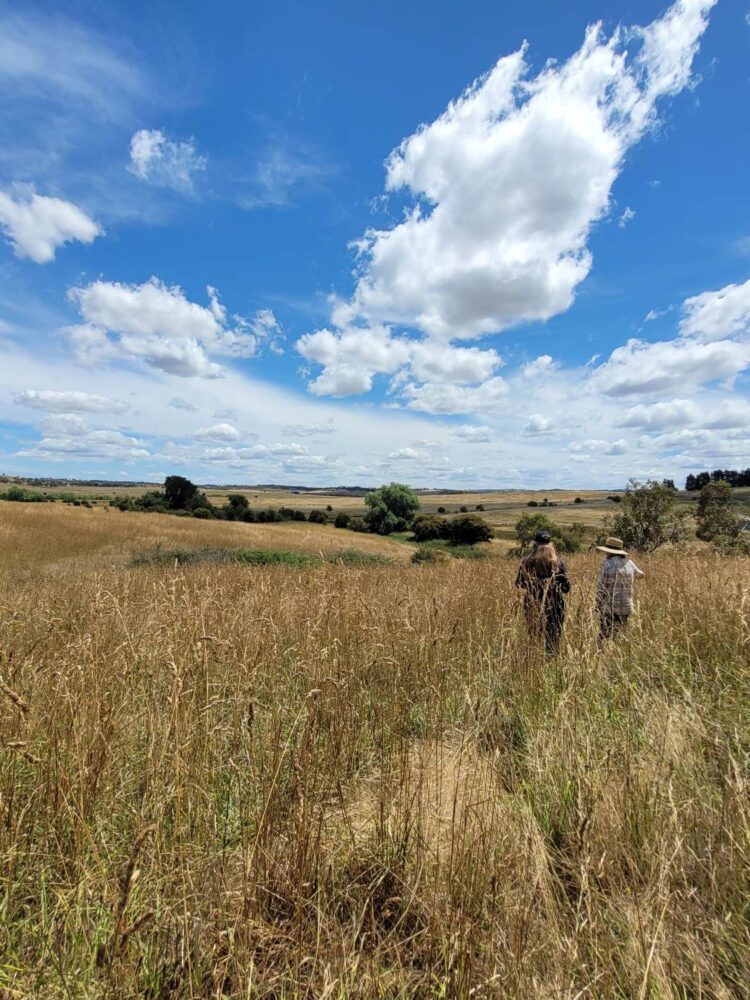
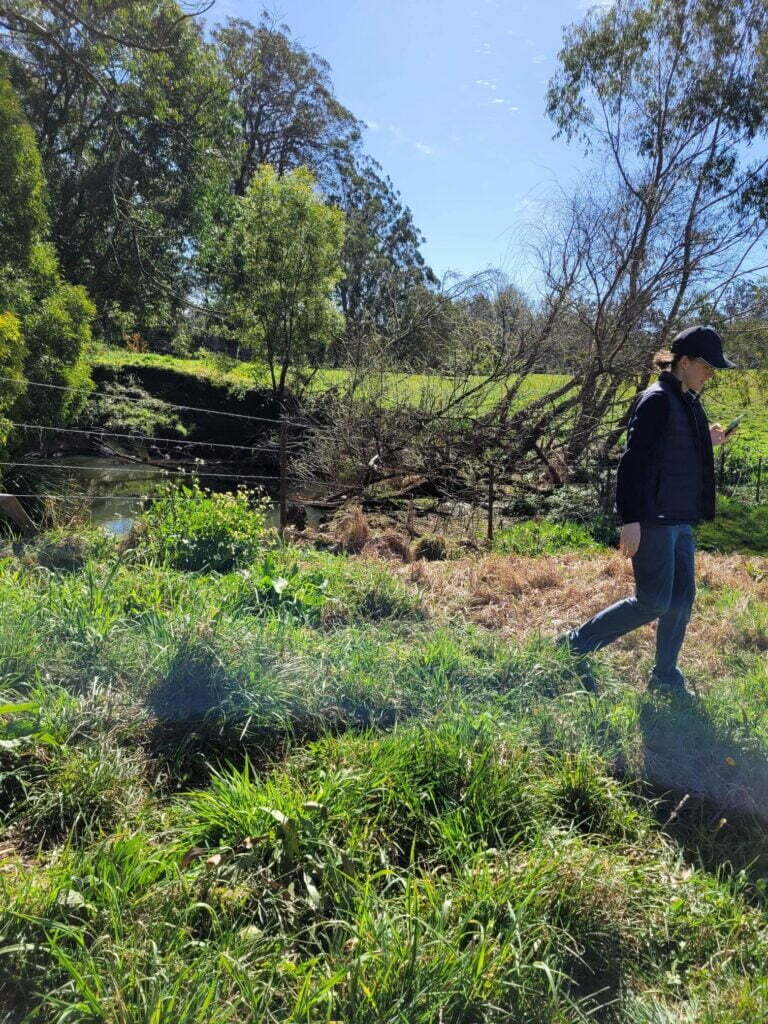
The flooding that occurred in 2022 brought signficant hardship and distress to many people across Australia. These costs have been somewhat tempered by the ecological and environmental benefits for fish, waterbrids and riparian health. As the majority of RoC projects occur in the ACT, Goulburn and Braidwood region, we have been fortunate that catastrophic flooding has largely been avoided, however, we have been working with landholders to continue our restoration work whilst also assisting them in managing the impact of a lot more water on their properties than usual. Some of the most common problems landholders have reported to us include:
- Many have not been able to access parts of their property for the past 18 months.
- Some have had to abandon their tractors, cars and farming equipment that are stuck in mud up to the axles.
- Newly built fences have been washed away.
- Tubestock that previously struggled in drought conditions have now been waterlogged with high attrition rates.
- Stock have become stuck in gullies, exacerbating erosion.
- Mature tree stands waterlogged with early signs of dieback.
- Large sections of riverbank have washed downstream, reducing water quality and access to the water.
Yet, a statement that I have heard consistently from the landholders is:
“‘There is so much water, perhaps too much water. But I don’t want to complain, because soon there might not be any water.”
When talking to our RoC landholders there is an understanding that the extreme variability of the last couple of years reiterates the need to prepare for variable seasons – to have a river system that functions well in the face of both floods and drought. In other words, a resilient river system. This is where the process of river restoration can be one of our most valuable tools.
What is resilience?
The term resilience has become a bit of a buzzword in government and academic thinking about climate change. For us, resilience is the ability or capacity to respond to changing conditions, or bounce forward after experiencing a negative impact. We believe it is a useful concept to think about when weighing up whether restoration efforts are worth it.
The other in common usage is ‘adaptation’ which is how you respond to changing conditions. For example, jumping to avoid something hitting you is adapting. Your ability to jump or get up after being hit is resilience. One of our Rivers of Carbon team members, Mikayla Hyland-Wood, wrote an in-depth article discussing resilience and what we mean when we say ‘resilient rivers’. In it, she talks about the 8 attributes or actions to build a resilient system.
- High biodiversity – This may look like diverse native grass pastures or mixed tree species planted along riparian areas so that the whole system does not go down in one even.
- Variability – Allowing some variability in your system is natural, try not to control or reduce natural variation in stream or river movement.
- Being modular – Ensure the system is not over or under-connected. Continual tree planting can achieve this, maintaining cover generation after generation.
- Being open – While keeping a close eye on those sneaky invasive species, allowing native species to spread over the landscape, uninhibited, will make for a healthy open system.
- Quick response – tight, positive feedback loops, returning to ‘normal’ quickly after a period of stress. RoC landholders who have undertaken restoration works have seen increased retained flows and ground cover during drought.
- Healthy reserves – these may be financial, biophysical (seed-banks) or social (community support). Maintaining ground cover, reducing active erosion and planting along waterways will prepare landscapes for challenging seasons.
- Foster what’s important – Valuing learning, innovation and novel perspectives allows many voices to join in conversations about how to respond to challenges like flooding.
- Social capital – Trust, leadership and strong social networks can make all the difference in trying times. Rivers of Carbon prioritises connection and relationships with our landholders through workshops, property-specific advice, and frequent site visits to help build and maintain this social capital.
From the above attributes I would like to particularly emphasise the attribute of social capital. It is too easy to think about building resilient river systems as simply implementing a series of physical works. At the heart of building resilience is you – your personal connection to the river, and the trust and collaborative relationship you have with the community around you. Without these connections, long-term resilience is hard to achieve.
What do rivers look like when they are not resilient?
As the concept of ‘resilience’ can sometimes feel like an abstract concept, it can be helpful to understand what a river may look like if it does not have sufficient resilience. Over the years at Rivers of Carbon, we have seen many examples of this. During the RoC Naas river and RoC Gudgenby river projects, we saw the severe impacts of flash flooding. The pictures below show two severely eroded riverbanks, occurring in a single event. Several factors may have exacerbated the impact of the flooding:
- Limited vegetation along the riverbank means there are very few roots holding the bank together, with nothing to slow down the water as it passes over the landscape — think of the difference between a lot of water running across bare ground compared to it running across your well vegetated garden.
- Further upstream, the once swampy meadow was historically channelised due to pasture improvement, with stock then grazing the catchment and further reducing vegetation cover. Vegetation helps to reduce the speed of water moving across the landscape and down the channel, as well increasing the infiltration of water into soil (think of the speed of water through a storm water drain or how difficult it is to go 100km/hr along a windy road compared to a straight road).
- In combination, these factors have increased the speed and volume of water running off steep slopes which has caused scouring of soil and erosion as the channel adjusts to the new flow regime.

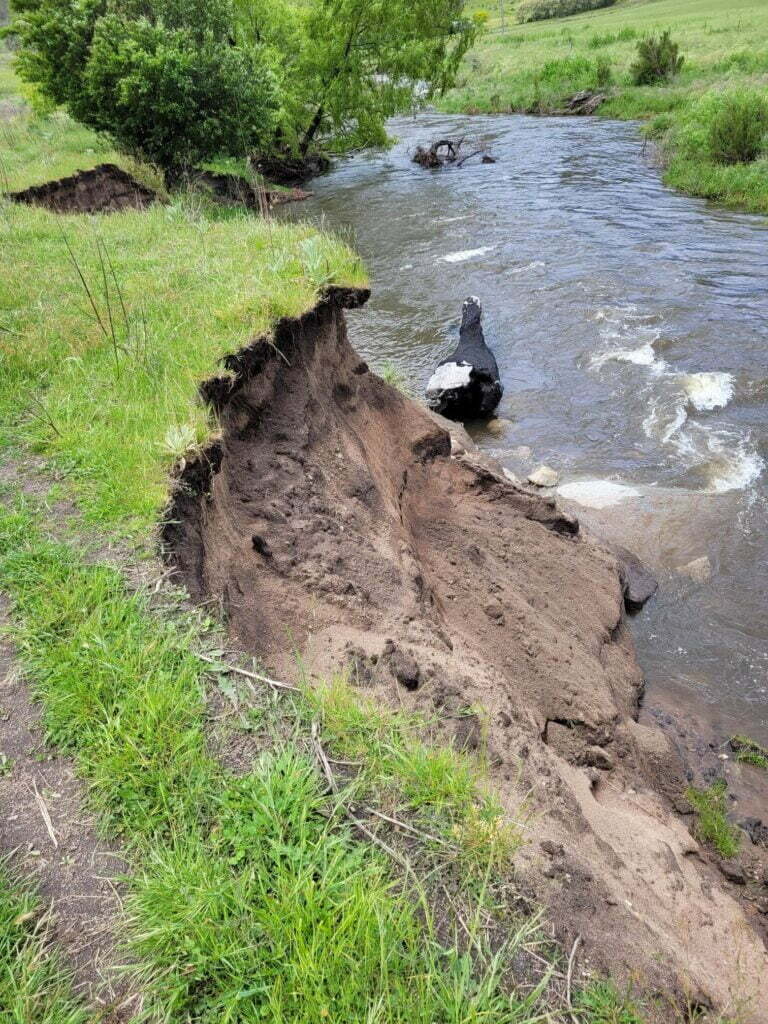
As the images above show, the impact of flooding on the Naas and Gudgenby Rivers has been significant. The degraded state of the rivers meant that they were unable to respond to the floodwaters rushing through their channels (the rivers had limited ability to jump to avoid being hit). With very little vegetation along the riverbank large scale erosion and sediment deposition has occurred, with consequent impacts on water quality and instream health (the rivers had a limited ability to get back up). Local landholders have watched the degradation of the river running through their properties, as well as damage to existing infrastructure like fences and crossings, with dismay. These negative impacts motivated Naas landholders to proceed with river restoration works so that the next time the river floods the resulting impacts won’t be as bad (they are building resilience).
So how does river restoration build flood resilience?
When we talk about flood resilience, we are referring to landholders being prepared for these impacts so that they have the ability to respond and bounce forward post impact. We talked to two of our RoC landholders, Angus Gibson and Margaret Sorial about how they have managed flooding on their property, and how river restoration has assisted them in building resilience to these flood events.
Angus Gibson and Margaret Sorial share their experiences
Angus Gibson and Margaret Sorial are champion landholders in our Rivers of Carbon community. Both have experienced multiple floods on their properties – Angus has had 12-15 major floods, and Margaret has had around 8. River restoration activities on their properties have included fencing, off-stream water and revegetation with tubestock in their riparian area. On both properties the flooding in 2022 had mixed results, with tubestock located in their riparian areas mostly surviving. Some othe shrub and tree tubestock close to the river died due to the frequency and magnitude of the flooding, but rushes, grasses and sedges have survived. Angus and Margaret agree that they would now plant larger riparian species further away from the riverbank in the future.
Margaret says that since fencing off the Wollondilly River that borders her property, the native reeds are thriving, where previously the reeds only grew on the neighbours’ side. This already seems to be helping to increase biodiversity, with an increased abundance of frogs and birdlife. When in flood, these reeds bend and move with the water flow, protecting the bank and slowing the velocity down so that erosion is minimised. After the flood the reeds gradually spring back up providing habitat for birds and fish, whilst also trapping sediment and improving water quality.
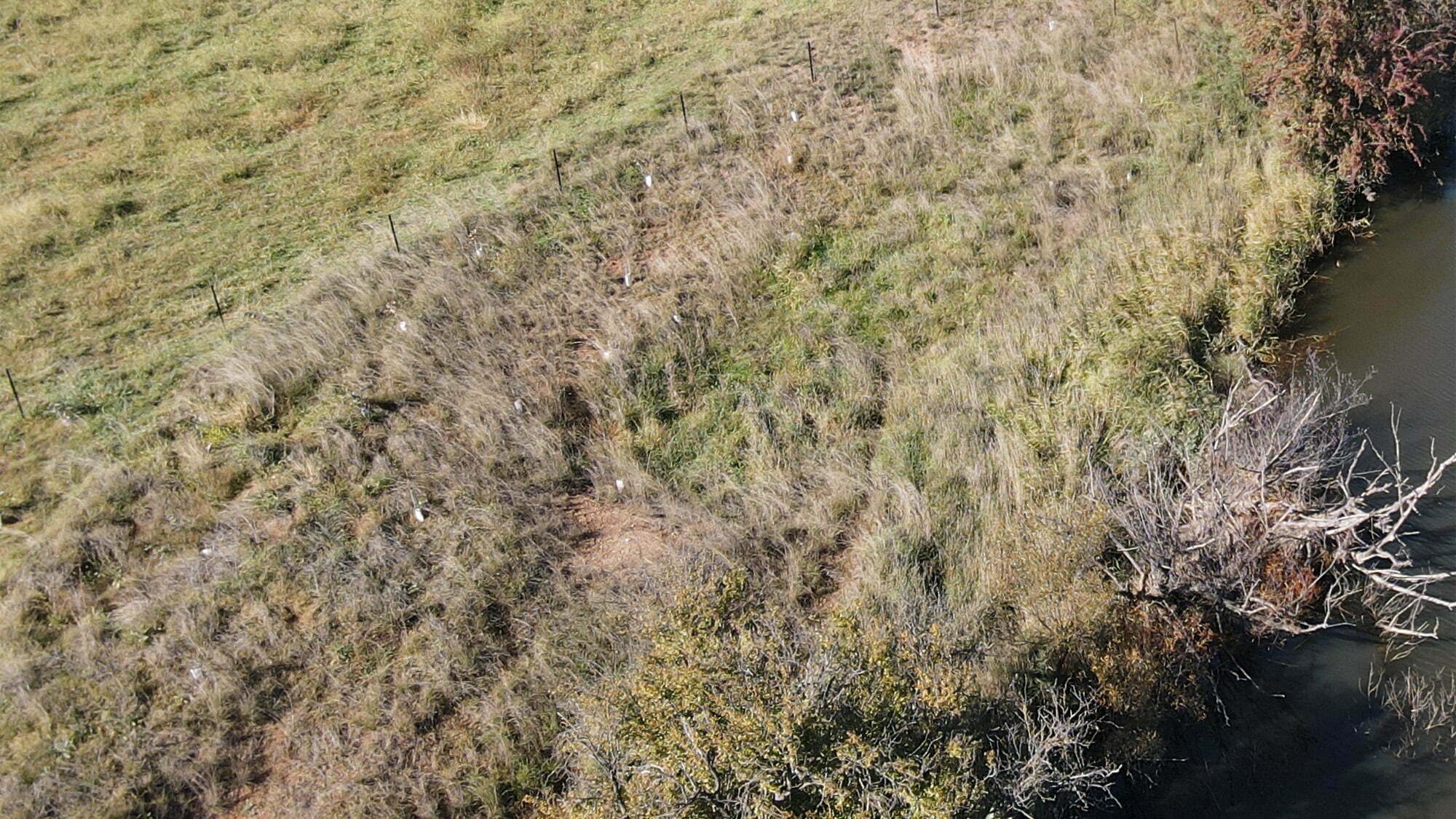
Angus said the severity of the floods meant that new tubestock had a minimal role to play in helping slow down the floodwaters. What was noticeable was the quality of the water which, even in high flows, has markedly improved with the removal of stock. When he reflected on how variable the weather has been he said, ‘don’t try and find the right conditions to start restoration, do it when you can, and always take note of what works, because you can’t predict how the system will respond’. These words of advice come from his experience of starting work on restoring a site a couple of years ago with direct seeding. He thought this had been unsuccessful as nothing showed up for many years, however, with the floods of 2022 the seeds have germinated and plants are thriving.
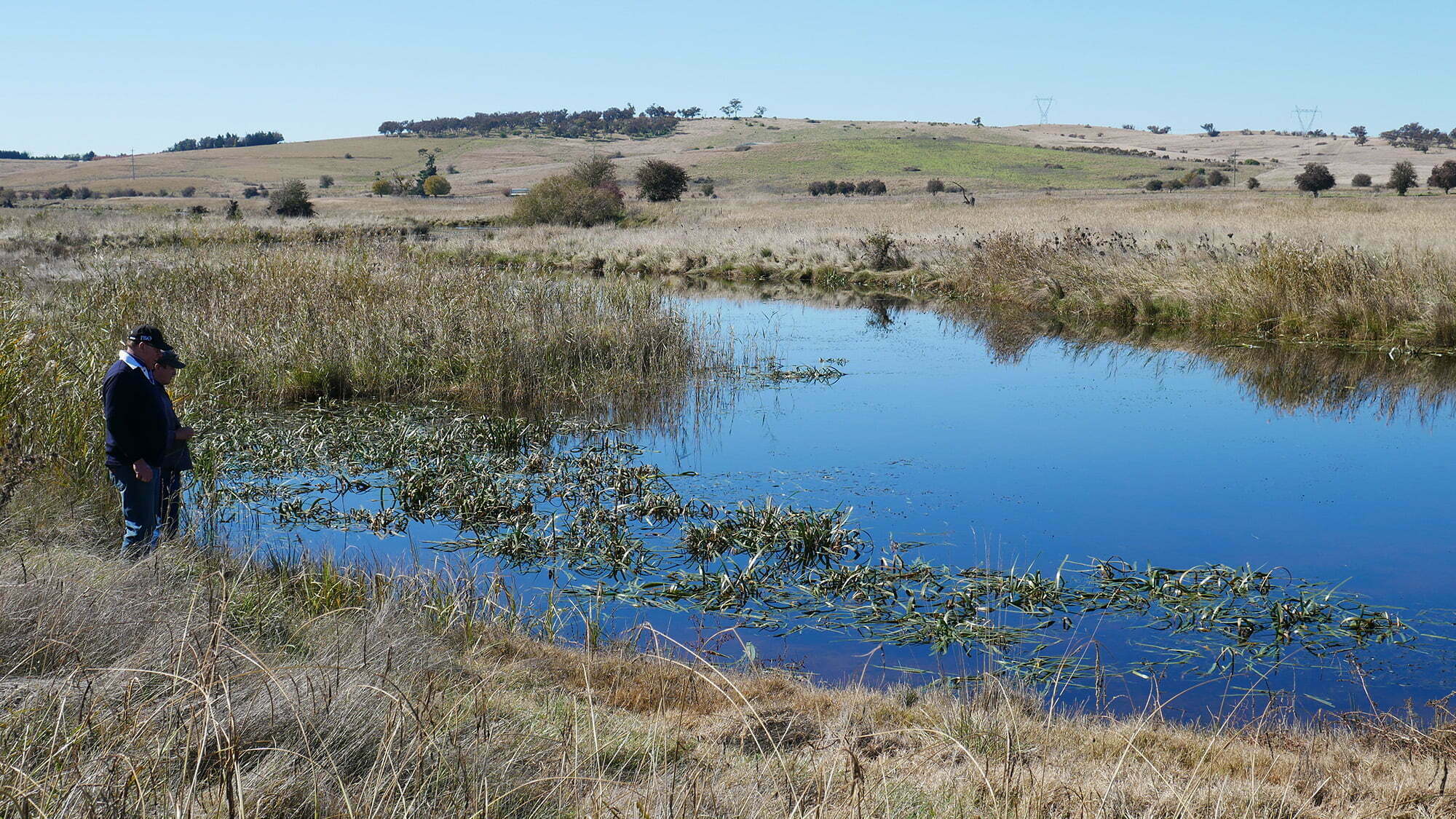
The table below brings together some of the key ecological and physical changes Margaret and Angus’s restoration efforts are enabling.
| Restoration action | Result of action | Flood resilience | Drought resilience |
|---|---|---|---|
| Revegetating the riverbank area and maintaining groundcover | Increase the amount of water stored in the floodplain and reduces runoff Slows down the movement of water Increases filtration Stabilises the riverbank Increases biodiversity, and enables a microclimate to develop | Reduces the volume and the speed of water moving downstream, reducing flood damage (to the river and to infrastructure) Improves the water quality of floodwater, limiting the risk of nutrification Decreases risk of erosion with high moving waters | Reduces loss of surface water and retains water in the landscape Microclimate created with increase in biodiversity can reduce air and water temperature, ideal for drought refuge for stock and biodiversity, and can limit the occurrence of algae Retains recreational and aesthetic benefits for landholders |
| Fencing off river to create a large buffer zone | Increases the ‘riverspace’ allowing for connectivity Increases space for natural regeneration | Allows for movement of water onto floodplains and reduces flood peaks moving downstream Enables biodiversity benefits for the river system from a connected floodplain Allows management of stock during high rainfall periods Enables benefits of revegetation discussed above | Enables benefits of revegetation discussed above |
| Keeping stock out of the river | Allows for the growth of revegetation Limits the impacts of erosion or destabilisation of the riverbank Reduces sediment build up and allows for water movement | Enables benefits of revegetation discussed above Decreases risk of erosion with high moving waters | Similar to principles of rotational grazing, allows for vegetation and pasture to grow and regenerate, providing a drought refuge |
Resilient rivers and people
By sharing the experiences of our landholders on the Naas and Gudgenby Rivers we can see the stark contrast to those of Margaret and Angus who have been restoring rivers on their properties over the last ten to fifteen years. There is no judgement here, rather, an acknowledgement that our rivers and the people who depend upon them, need help in an ever-changing physical and community climate. We enjoy working with landholders at whatever stage of their restoration journey, as we know that every action taken to protect and restore riparian areas is a positive step towards resilience over the long-term, not only for the river, but for the people who live along it.
Resources
To learn more about the river restoration efforts at properties like those of Margaret and Angus, check out our Source Water Linkages project page. or watch the videos below:
Property: Wongajong (The Sorials)
Property: Tirranna (The Gibsons)
Helpful Guides & Articles
- Resilience – what is it really?
- Stock and Waterways – a NSW Managers Guide (applicable in other regions)
- Restoring Rivers and Floodplains for Habitat and Flood Risk Reduction: Experiences in Multi-Benefit Floodplain Management From California and Germany
- Nature-Based Flood Mitigation Strategies in Australia
- How Does River Restoration Reduce Flood Risk?
Rivers of Carbon is committed to helping landholders protect and restore Australian wetlands and waterways.
Over the course of 15 years, we’ve had the privilege to work on a variety of landscapes, teaching us how to adapt and transform to different ecosystems. If you’re interested in working with us, our RoC Source Water program is offering opportunities to landholders with livestock in selected areas.
Contact one of our RoC team for more information:
Lori Gould, RoC Program Manager (right)
✉️lori.gould@arrc.com.au
📞0439 030 058
Isobel Bender Project Officer (left)
✉️isobel.bender@arrc.com.au
📞0405 780 774


